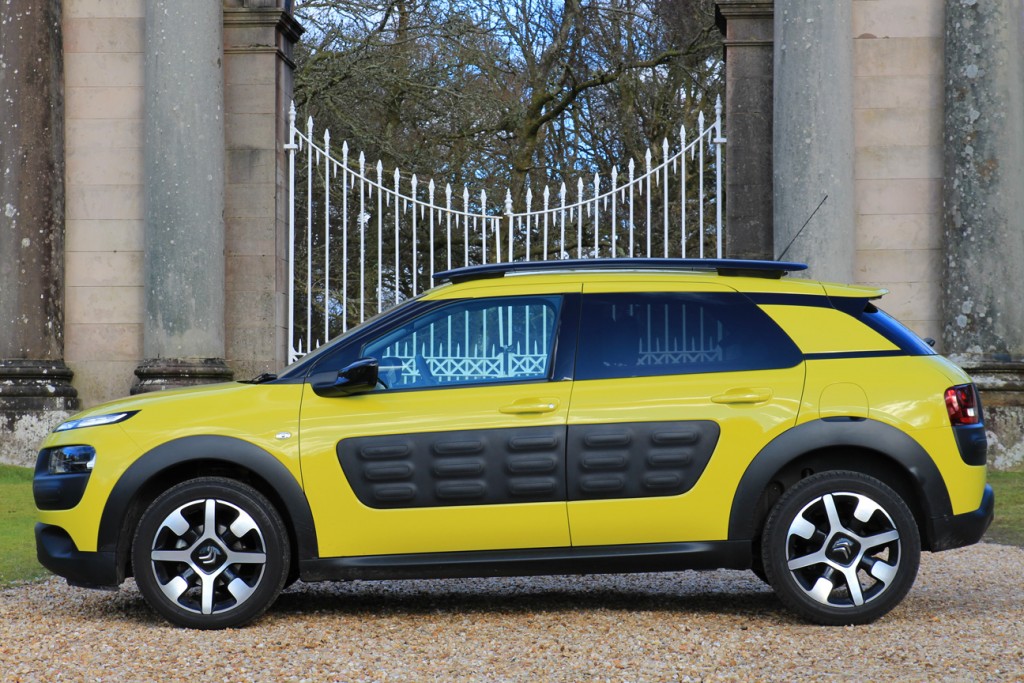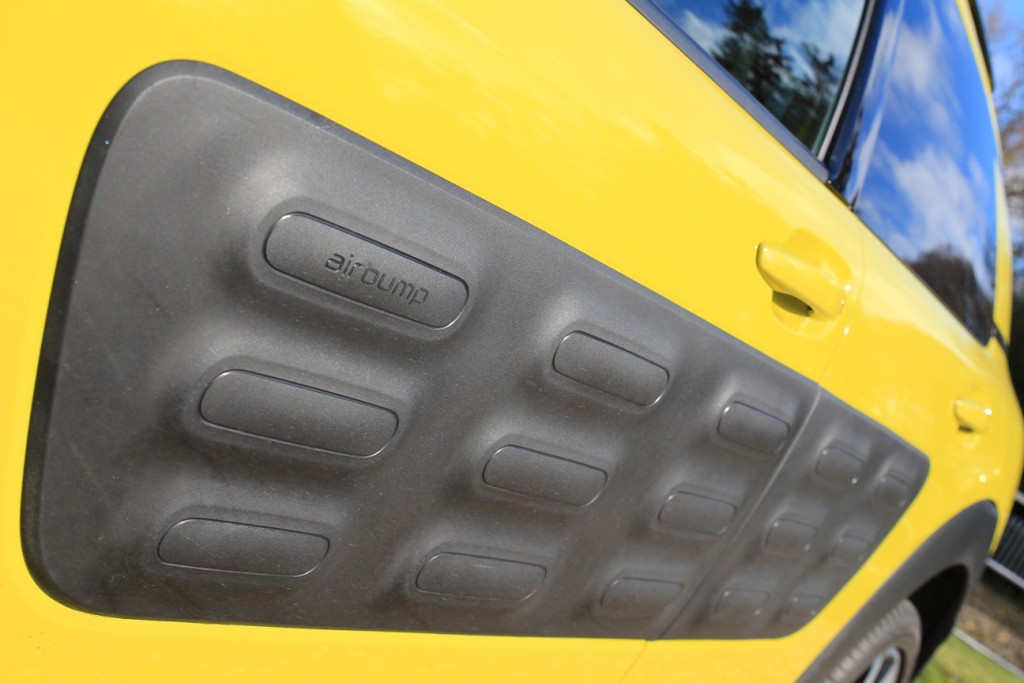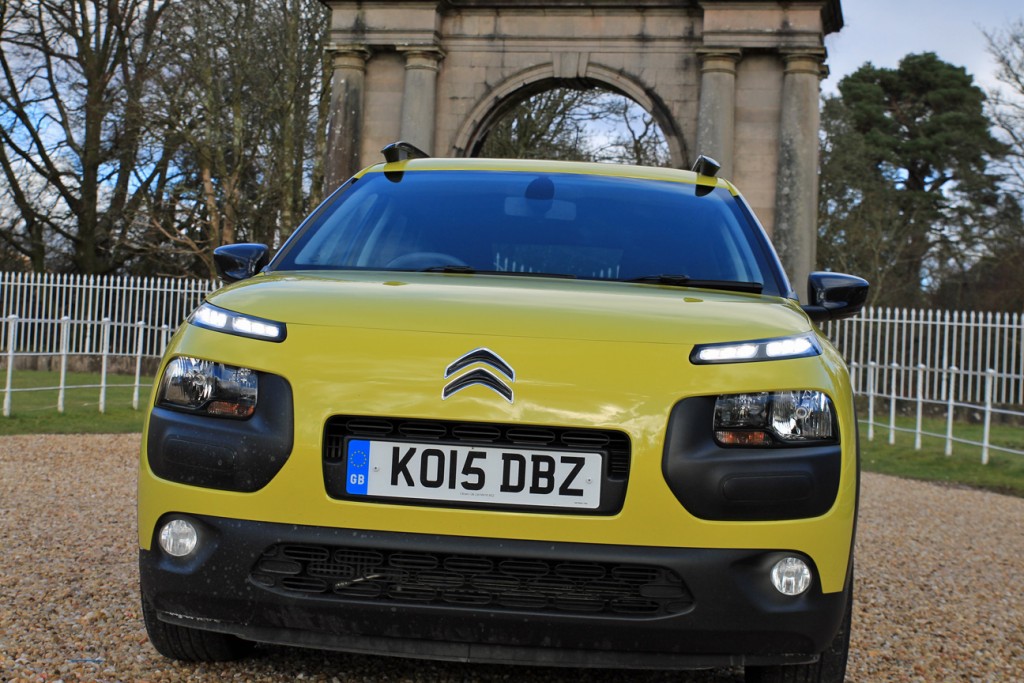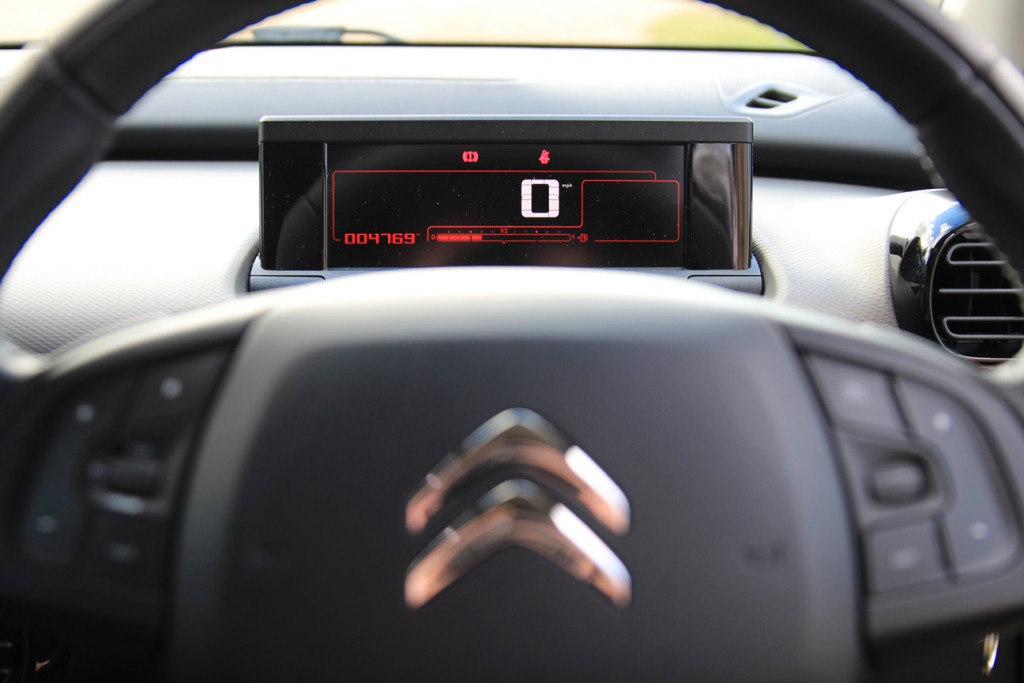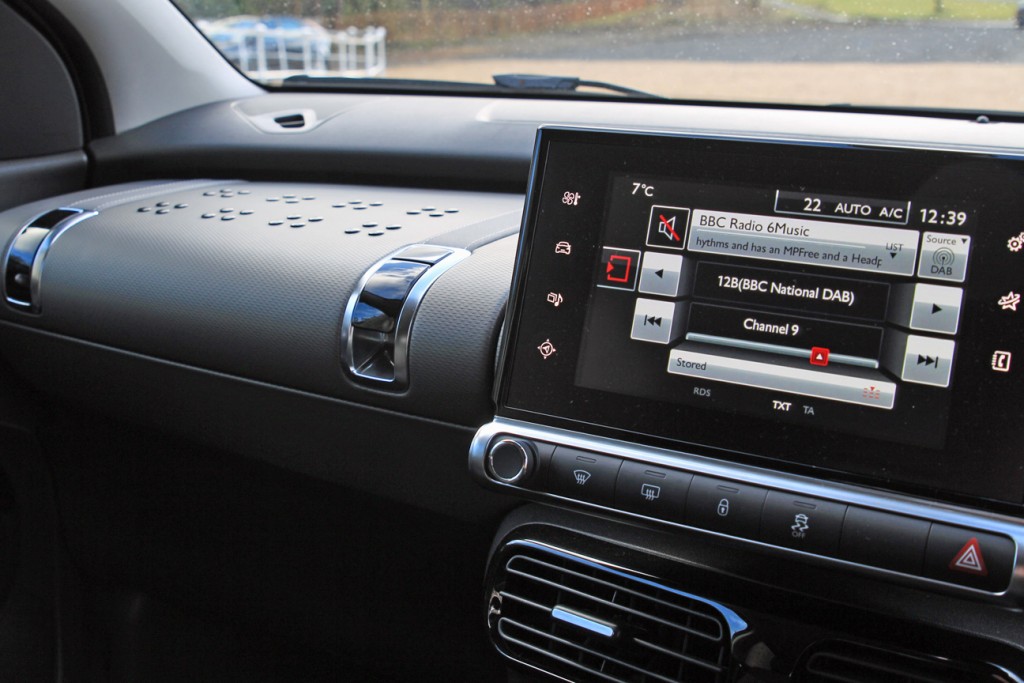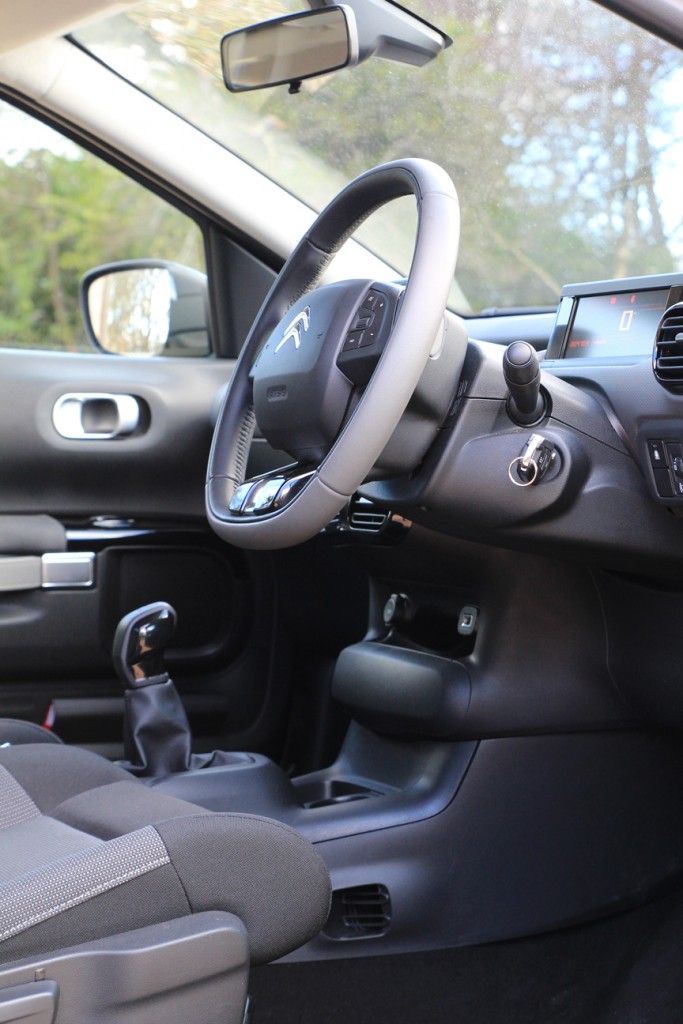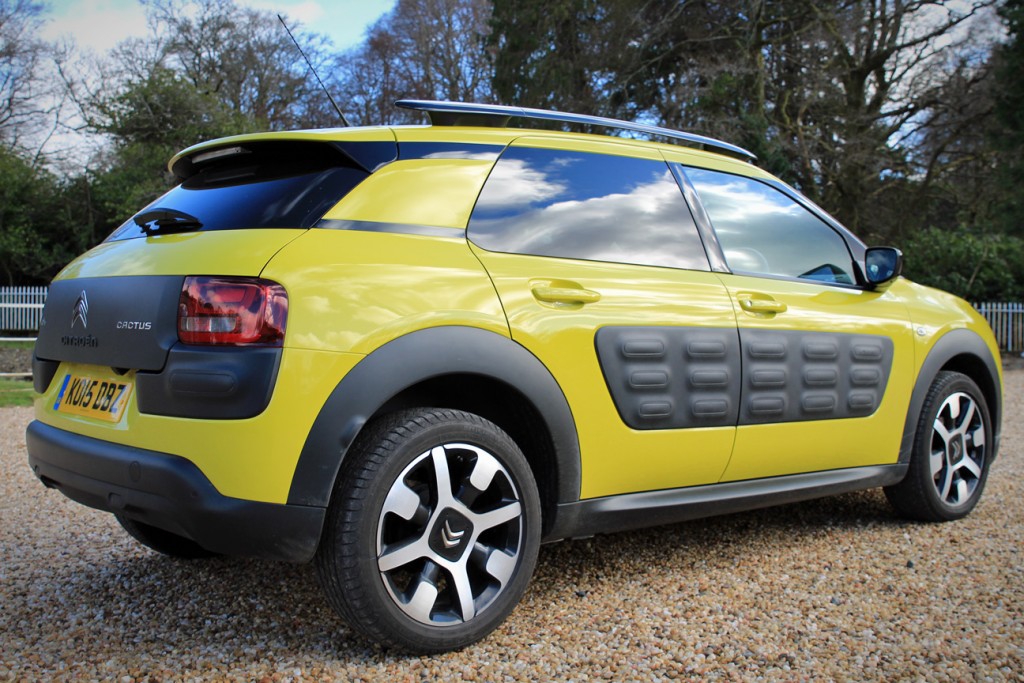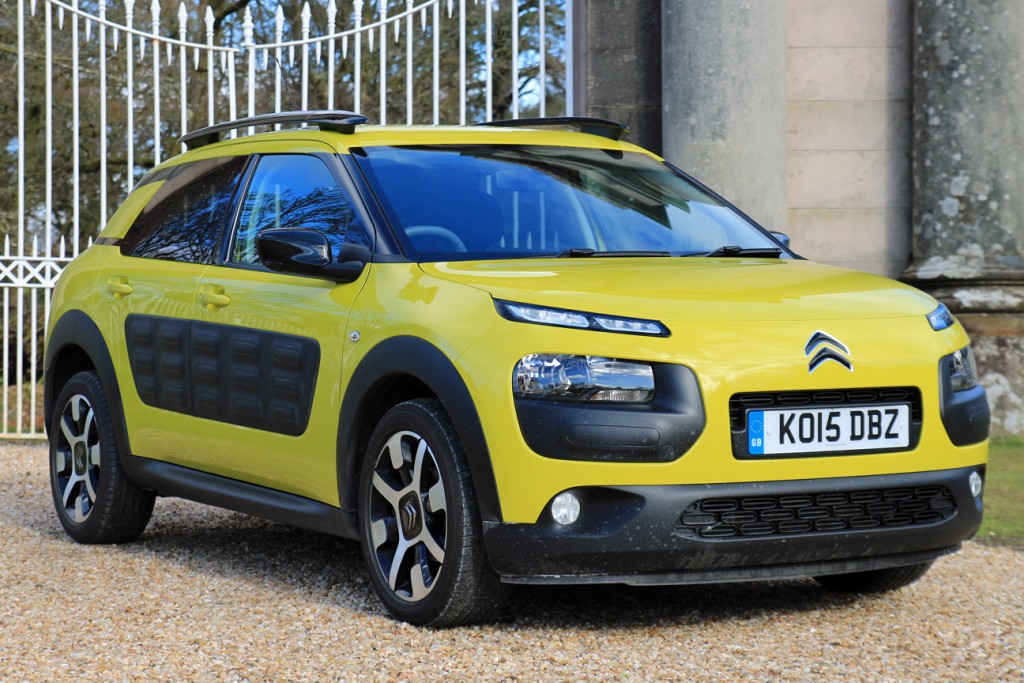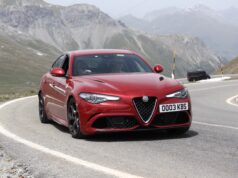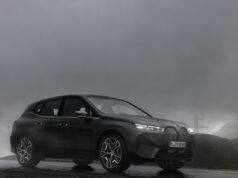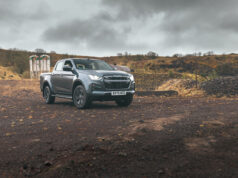
Citroen have a history of not being afraid to be a bit quirky and do things a bit differently from other manufacturers. Whether it be innovative technology such as swivelling headlamps, and self levelling hydropneumatic suspension or unconventional styling such as the 2CV, DS, CX and more recently the C6.
The Cactus falls into the latter camp, who’s looks are definitely a bit ‘marmite’ – predominately due to the soft & squidgy ‘Air Bump’ side panels. As well as being a bold styling statement, they’re great for offering protection from car parking dings and wayward shopping trolleys!
The front end is also pretty distinctive thanks to further impact protection, some cooling looking LED daytime running lights and lack of an obvious radiator grill. Personally, I like the looks. I’d probably choose a more subtle colour than the ‘Hello Yellow’ paint of the test car, but otherwise I think it looks great, especially amongst a sea of carbon copy hatchbacks.
Inside, it’s a bit more conventional, but there’s still plenty of individualism. The digital dash is quite minimalistic (although the lack of a rev counter seems odd), while it manages to feel both futuristic and retro. Maybe that’s because it reminded me of the 80’s film Tron – unfortunately though, it doesn’t come complete with a Light Cycles game to keep you amused while stuck in traffic. If you’re not familiar with the works of Flynn and the MCP, have a Google 🙂
There’s also a distinct lack of switchgear, with the central touch screen used to control the majority of functions such as ventilation, audio, navigation and vehicle settings. While this sounds good in theory, in practice it doesn’t work quite so well. The touch screen can be slow to respond and it’s not as intuitive as it should be. This results in relatively simple tasks, such as adjusting the climate control, being more fiddly than we’d really like.
Additionally, there are a couple of other oddities, the primary one being that there is no obvious way to turn the audio & ventilation systems off. After a bit of a play, I discovered that you can turn the heating off by using the fan speed control, but I never did work out how to turn the radio off! I’ve never before considered the on/off switch for these functions to be superfluous, but then maybe I’m unusual in that I like switch these off before leaving the car.
Another interesting interior feature is the top opening glovebox, made possible by relocating the passenger airbag to the roof. As well as being more convenient, it results in more leg/knee room. The front armrest is less successful. With it in place it’s pretty much impossible to operate the hand brake, resulting in it being left up most of the time. A bit of a oversight on a car which is so obviously design focused.
It’s reasonably roomy inside, and the seats are typical French car, big squishy jobs. However, I really struggled to get a comfortable driving position, and it took a couple of days of adjusting before I found one I was reasonably happy with it. It still wasn’t ideal though, not helped by a steering wheel that only adjusted for rake not reach, and a lack of lumbar support. Again, this may be down to personal preference so it may suit others fine.
If you’re not a fan of the looks then the drive probably isn’t going to impress enough to win you over. While it’s not bad, it’s distinctly more ordinary than its appearance. The engine felt quite un-diesel like, being more linear in its delivery than some turbo charged derv units, but that was probably partly due to its relatively low power output. Being an efficiency orientated unit it scores highly on emissions and mpg figures. Dipping under the magic 100 kg figure means it’s free to tax, and while I couldn’t get anywhere near the ‘official’ combined figure of 80mpg, a best of 63mpg is pretty respectable.
Ride and handling are average, rather than great. While it generally rides ok, it doesn’t float over bumps in the style of Citroens of old and can get a bit unsettled at times, especially if you up the pace. The gear change also doesn’t like to be rushed and could do with being more precise and a shorter throw. It’s a car which seems to suit a relaxed style, rather than an enthusiastic one, but to be fair that’s probably in keeping with it’s family car objectives.
Despite some of the cool design touches, there is evidence of it being built with cost in mind. The rear windows are pop out items, in the style of a two door hatchback, the rear bench doesn’t split when folding and some of the plastics have a cheap, hard and scratchy feel to them. Closing of the doors and tailgate also lacks a solid reassuring thud, and wind/road noise levels could be better.
Being a fan of Citroens, I was a bit disappointed with my initial impressions of the retina burning Cactus. However, after a few days it grew on me a wee bit. Top marks to Citroen for the originality and design but the dynamics and build quality feel like there’s a bit more work to do. If you love the looks I’m sure you’ll forgive the flaws but if not I suspect it won’t quite win you over.
Citroen Cactus Flair Blue HDi100
PRICE: £18,195
ENGINE: 1560 cc Petrol, 4 cylinder, 5 speed manual
POWER: 100 bhp @ 3,750 rpm
TORQUE: 187 lb.ft Nm @ 1,750 rpm
PERFORMANCE: Top speed 114 mph 0-62 mph 10.6 secs
CONSUMPTION: 80.7 mpg (combined)
CO2: 95 g/km


